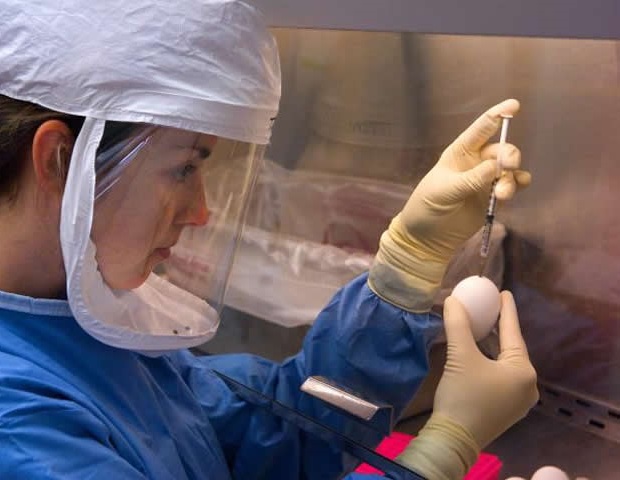In an evolving health landscape, emerging research continues to highlight concerns that could impact everyday wellbeing. Here’s the key update you should know about:
As the US withdraws from the World Health Organization and cuts overseas aid, regional partnerships are critical to safeguarding the health of member countries in a region where climate change and chronic diseases loom large.
These are some of the reflections of the WHO’s Western Pacific regional director, Saia Ma’u Piukala, on the health challenges facing the region and measures needed to overcome them, as he heads to the World Health Summit (12-14 October) in Berlin, Germany.
Before a key regional meeting in Fiji later this month, Piukala will join other global health leaders to discuss how health governance and financing models must adapt to the new reality of dwindling foreign assistance.
In a written interview, he tells SciDev.Net about the crucial role of philanthropic partnerships, why multilateralism in health is more essential than ever, and the threat posed by misinformation and disinformation to public health.
How is WHO preparing for future pandemics amid funding challenges and geopolitical shifts?
The US withdrawal has forced WHO to rethink and restructure globally. It’s painful — but also a chance to refocus and diversify our funding. Member states in the Western Pacific have stepped up, showing strong support.
To cite a cliché, from adversity comes opportunity — and we are using this moment to recalibrate and strategise anew, with a sharper focus than ever on what we need to do and who we need to partner with to ensure we can fulfil our mandate.
Multilateralism in health is not in crisis — it’s more essential than ever. The Pandemic Agreement give countries the tools to better prepare and respond to emerging health threats, including pathogens with pandemic potential.
At our upcoming Regional Committee meeting in Fiji [20-24 October 2025], we’ll discuss how to implement these frameworks to strengthen regional readiness.
Why are partnerships, such as with the Asia-based Institute of Philanthropy, vital for WHO’s Western Pacific Region?
Partnerships are the lifeblood of WHO’s work — especially in a region with many middle- and lower-income countries. Our collaboration with the Institute of Philanthropy is helping us connect with new philanthropic actors, who may not fully understand WHO’s role.
Once we show the real-world impact of our work — backed by solid data — interest grows and doors open.
I saw this for myself at the recent Asian Venture Philanthropy Network conference in Hong Kong, where I shared the WHO story, along with key health priorities for our region. These conversations sparked genuine interest and are already leading to new and promising opportunities for collaboration in health.
How is WHO Western Pacific combating misinformation and rebuilding trust in science?
Tackling the infodemic is a key pillar of work for us. WHO is investing in infodemic management, embedding it across programmes.
We have been urging our member states to crack down on the commercial determinants of health that are contributing to the staggering global burden of non-communicable diseases, such as hypertension, diabetes, cancers. [These diseases are] linked to tobacco, alcohol, processed foods and fossil fuels — products representing powerful industrial giants and conglomerates the world over, including in the Western Pacific.
The more traction we get in our efforts, the more pushback we get from Big Industry — including disinformation and misinformation perpetuated through insidious and aggressive marketing tactics increasingly aimed at young people, such as advertising for e-cigarettes and vapes, or making alcohol cheaper and more accessible.
What are the top health priorities at the Regional Committee meeting in Fiji and how do climate change and AI feature?
We’re focusing on three key areas. First, NCDs — represented by renewed action on tobacco — and alcohol-related illnesses, where we are customising global WHO action frameworks for our region. We’re also shining a light on oral health, in a region where over 800 million people live with largely preventable oral diseases.
Secondly, climate and health. Climate change is disrupting water, food, and disease patterns. Specifically, we are calling for health systems across our region to be far more resilient to climate change and its impacts — from compromised water supply impacting sanitation and infection control, to curtailing carbon emissions.
We’re launching a regional roadmap and a five-year strategy to build climate-resilient health systems through our Asia-Pacific Centre for Environment and Health, based in Seoul.
Thirdly, health emergency preparedness — implementing the International Health Regulations amendments and the Pandemic Agreement to make our region safer.
We’re also exploring AI’s potential — from telehealth to diagnostics — while asking tough questions about equity. Who benefits? Who’s left behind? Health must help bridge these gaps.
What’s a standout success story in the region, and what can we learn from it?
The elimination of measles and rubella in 21 Pacific Island Countries [announced in September] is a triumph of collaboration. Despite limited resources and vast distances, countries worked together to protect their communities. As someone from Tonga, this achievement is deeply personal.
It reminds us of the global effort to eradicate smallpox — proof that health partnerships can transcend borders and politics. In our divided world, I remain a realistic optimist: with health leading the way, a better tomorrow is possible.
